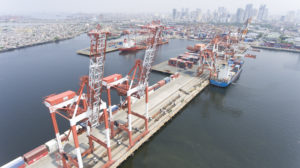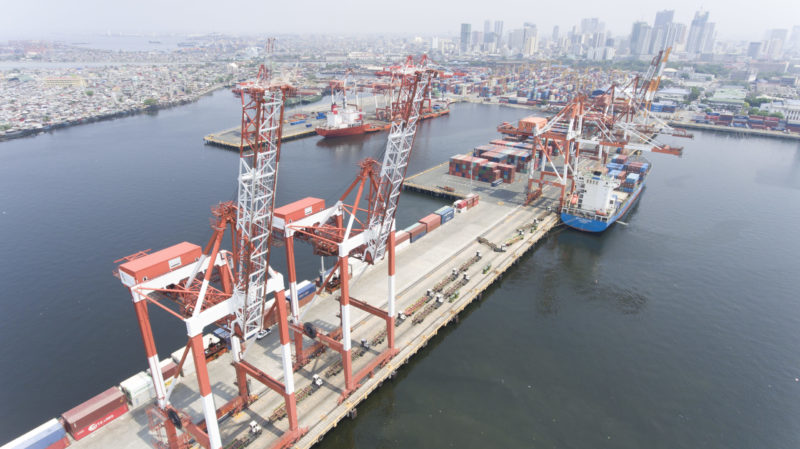
Asian Terminals Inc. (ATI) reported a net income of P3.7 billion in 2019, 28.9% higher than the P2.9 billion earned in 2018 as the port operator handled more volumes last year.
ATI said its revenues last year increased by 8.6% to P13.3 billion from P12.3 billion in 2018, driven by higher international containerized cargoes handled by its gateway ports in Manila and Batangas.
Double-digit cargo growth was recorded at Manila South Harbor and Batangas Container Terminal (BCT), which together handled a consolidated container volume of 1.61 million twenty-foot equivalent units (TEU)—the highest thus far for the listed port operator.
International boxed cargoes in Manila South Harbor reached 1.3 million TEUs, over 10% higher than 2018 figures. ATI said the port handled over 100,000 TEUs for nine out of the 12-month period, setting a new operations milestone, capped by nearly 124,000 TEUs in March.
BCT, meanwhile, officially broke through the 300,000-TEU mark in 2019, finishing the year with over 311,000 TEUs for a volume increase of over 25% compared to 2018.
ATI said Manila South Harbor and BCT have “effectively supported government’s drive for inclusive growth within and outside Metro Manila by continuously opening direct market connectivity and delivering competitive port services to shippers based in the country’s National Capital Region and Calabarzon (Cavite, Laguna, Batangas, Rizal & Quezon).”
Batangas Port, in particular, has contributed to decongesting Metro Manila roads as last year’s cargo volume meant over 150,000 truck trips were taken out of metro roads, with more Calabarzon shippers preferring to route consignments via Batangas.
ATI has implemented capacity expansion and efficiency enhancement projects in both terminals to be able to handle more cargoes in the future.
In Manila South Harbor, expansion of the container yard along Muelle de San Fancisco has added a static capacity of 4,500 TEUs.
BCT, on the other hand, now has a 600-meter-long berth and expanded container yard, complemented by four quay cranes, eight rubber-tired gantry cranes and other cargo handling equipment. Capacity has increased to around 500,000 TEUs from 300,000 TEUs annually.
Aside from these, ATI has also developed additional off-dock container yards in Manila and Laguna to support port operations, customers and industry stakeholders.





